Blogs
Search results
-
From stress to success: rapid evolution as a survival strategy against environmental stressors
When you think of evolution, you probably think of Darwin, timescales of millions of years and dinosaurs. But there is also rapid evolution, microevolution, a way in which organisms can quickly adapt to changes in their environment. This is becoming increasingly important for the survival of species, in view of climate change and other human disturbances in ecosystems.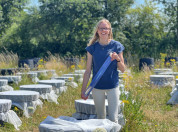
-
The highs and lows of fieldwork in Greenland
As part of the CLIMET consortium (Climate feedbacks and methane cycling in Arctic lakes: enzymes to atmosphere), researchers from the NIOO-KNAW have been in West Greenland investigating methane cycling in Arctic lakes. The aim of this first field visit was to assess variability in lake conditions and microbial composition across the low arctic landscape of Kangerlussuaq.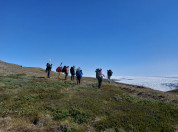
-
A day in the life of a (citizen) scientist
What does a day as a researcher look like? That greatly depends on what kind of researcher you are. While some are working in greenhouses, and others are programming behind a laptop to process results, it looks different still when a researcher works with citizen scientists. I got to join Rosan van Halsema's fieldwork for her PhD for a day to experience what such a day looks like.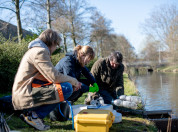
-
Can plants help us fight climate change?
Hi, my name is Gabriel, and I like to work with (almost) invisible things. Every day, as I walk into the lab at the Netherlands Institute of Ecology (NIOO-KNAW), I’m reminded of the very small things that, despite their size, have a very big impact on our lives. Like the tiny microbes in our soils that help cycle nutrients, the gas molecules that heat our planet, or the almost invisible compounds that plants release from their roots. I'm a PhD student working on the ClipsMicro project, and my focus is on a simple and sustainable idea: using the right plants, at the right time, to reduce greenhouse gas emissions from farmland.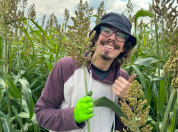
-
Galápagos (5): Galápagos revisited
Two years after our first scientific expedition, we returned to the Galápagos Islands—this time with sharper tools, new goals, and even more excitement. Our mission? To dive deeper into the hidden microbial world of Scalesia, the archipelago’s iconic giant daisies, and uncover secrets that even our earlier work only hinted at.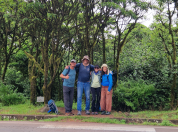
-
Beavers in the Netherlands: a blessing or a burden?
Beavers were reintroduced to the Netherlands in 1988 and the beaver population has grown enormously since then. About six thousand beavers now live in the Netherlands. In the wild, beavers can have very positive effects on their environment by changing it, but is this also true in human-regulated areas?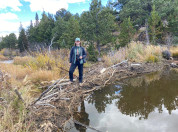
-
A summer of research into blue-green algae in mini lakes
Blue-green algae disrupt many people's swimming plans. Picture this: the weather is nice and you want to hit the water, but you're out of luck! The beach is closed because of a blue-green algae bloom. But why does a a swimming spot close when that happens?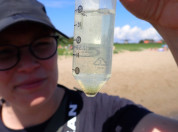
-
Freshwater systems: a neglected piece of the carbon storage puzzle
Inland waters can help us mitigate climate change by storing carbon in the sediments. However, for a long time, they were ignored as a player in carbon sequestration ―the process of removing CO2 from the atmosphere, transforming it, and storing it underground. Carbon sequestration happens in ecosystems all around the world. Forests and oceans are most well-known for sequestering carbon, but freshwater ecosystems are also good at it. To put this in perspective: inland waters might sequester up to 20% of the amount of carbon sequestered by the oceans, even though they cover <5.6% of the oceans’ area.
-
Can we train soil microbial communities to promote plant growth?
Microbial communities are vital for ecosystem functions, and utilizing their diversity, particularly in phosphate-solubilising microbial communities, can provide sustainable solutions for agriculture. However, constructing and optimizing these communities present challenges due to complex interactions among microorganisms.
-
Galápagos (4): the expedition film
An international research team led by the Netherlands Institute of Ecology (NIOO-KNAW), the University of San Francisco de Quito (USFQ) and the Galápagos Science Centre (GSC) is to search for invisible life on the Galápagos Islands. The diversity of bacteria and other microscopic organisms may not be evident to the naked eye, but it is essential to nature. The research team will uncover the yet unknown microbial world that Darwin could not see. Specific focus is given to microorganisms associated with the islands' giant daisies (Scalesia): unique endemic plants that are currently threatened by extinction.
-
Galápagos (3): Back home and prepping for data analysis
An international research team led by the Netherlands Institute of Ecology (NIOO-KNAW) has been searching for invisible life in the iconic Galápagos Islands. Part three.
-
Galápagos (2): Next generation technology
An international research team led by the Netherlands Institute of Ecology (NIOO-KNAW) is searching for invisible life in the iconic Galápagos Islands. Part two.
